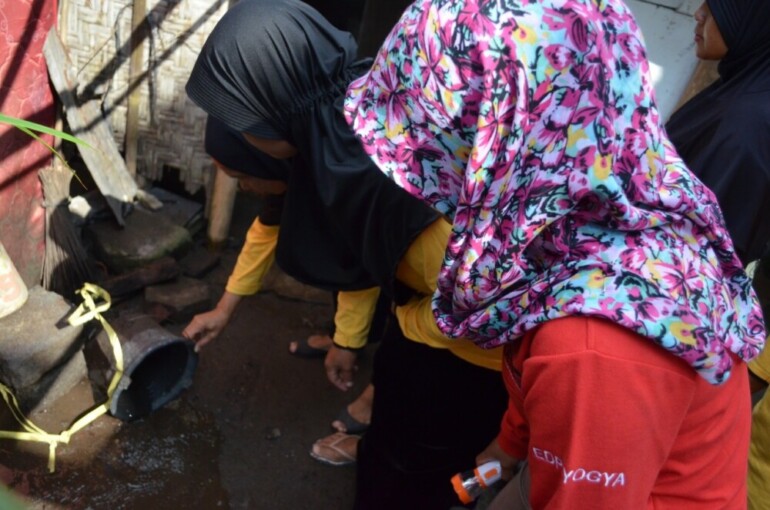
Throughout the Covid-19 pandemic outbreak, the community needs to prevail vigilant against the threat of Dengue Hemorrhagic Fever (DHF). The disease caused by Aedes aegypti mosquitoes began to increase in early 2020, along with the arrival of the rainy season.
Based on data from the Ministry of Health, which starts from 1 January 2020 to 29 February 2020, there have been 13,864 dengue cases with 78 people dead. Some regions have even determined the DBD case as an Extraordinary Event (KLB) such as Sikka Regency and Belitung Regency.
Awareness of the dengue threat in all regions must remain a priority, especially in the coming months. Yogyakarta World Mosquito Program (WMP) insect expert, Warsito Tantowijoyo, predicted March and April 2020 as the peak of dengue cases in the city of Yogyakarta. This prediction accumulated based on Aedes aegypti population data that has reached its peak around January 2020.
“The peak of the Aedes aegypti population occurred around January, after which the population will decline. Based on experience, the high season of dengue fever usually begins to occur 2-3 months after the peak mosquito population. This is where we need to be aware of the increasing number of dengue cases,” said Warsito.
Based on data from the Yogyakarta Special District Health Service (DIY), during January-February 2020, in Yogyakarta as a Province (DIY), there have been 1032 cases, with two people dead in Gunung Kidul Regency. This figure consists of 333 cases of patients in Gunung Kidul, and two people died, 276 patients in Bantul, 248 patients in Sleman, 92 patients in Kulon Progo, and 81 patients in Yogyakarta City.
Responding to this, WMP Yogyakarta supports the Government so that people are more alert to the threat of dengue fever. WMP Yogyakarta is a research program led by FKKMK UGM and funded by the Tahija Foundation.
Yogyakarta WMP Principal Researcher, Adi Utarini, said that in 2016, he began to leave a bucket filled with Wolbachia Aedes aegypti eggs in parts of the city of Yogyakarta to see its effectiveness in controlling dengue. From the multi-years conducted research, WMP Yogyakarta found that Wolbachia was effective in reducing DHF rates in quasi-research areas. His findings, the case of DHF in quasi areas intervened with Wolbachia mosquitoes in Yogyakarta City, decreased 74 percent compared to areas that have not occurred.
This figure, according to Utarini, is an initial analysis in the implementation of Wolbachia’s Aedes aegypti technology for controlling dengue vectors. This analysis shows a positive direction that there is a decrease in dengue cases in the Wolbachia mosquito egg storage area compared to the comparison region. The case data comes from passive surveillance data from the Yogyakarta Health Office before and after the release of Wolbachia’s Aedes aegypti.
“The results of this quasi area are not a conclusion. WMP Yogyakarta is still waiting for the results of the CRCT (Clustered Randomized Controlled Trial) research, which expected to be obtained by the end of 2020,” she said.
To avoid DHF and COVID-19, people always need to increase endurance and keep the environment clean. To support this, Utarini said that the Government program with PHBS (Clean and Healthy Behavior) remains a reference. Mainly also in running 3M plus, such as draining water reservoirs, closing water reservoirs, burying used goods, plus avoiding mosquito bites, as well as anticipating potential places that become mosquito breeding grounds.
“Throughout our research, we believe the Wolbachia method as a complement to the ongoing dengue control efforts, such as the Eradication of Mosquito Nest (PSN) through 3M plus,” she added.
dr. Citra Indiriani, as an epidemiologist WMP Yogyakarta, reminded the public not to hesitate and immediately access the nearest government health facility if they have a fever. According to him, most health centers in the city of Yogyakarta currently support for early detection of dengue fever. Early detection is essential to reduce the severity and spread of the disease.
Author: Hakam
Translator: Natasa A

